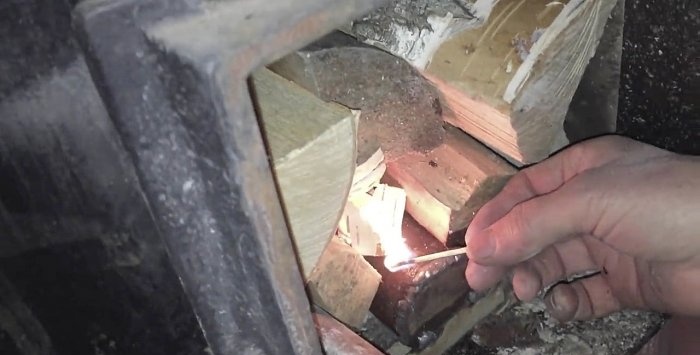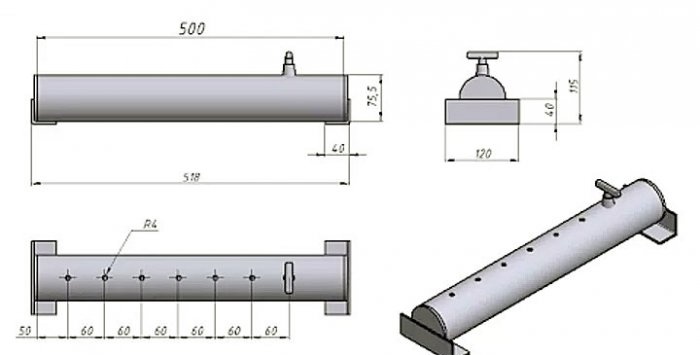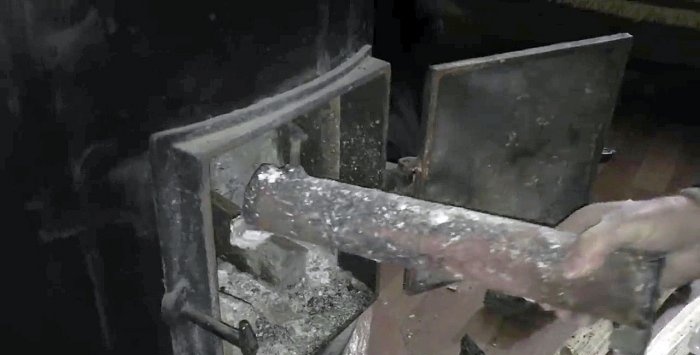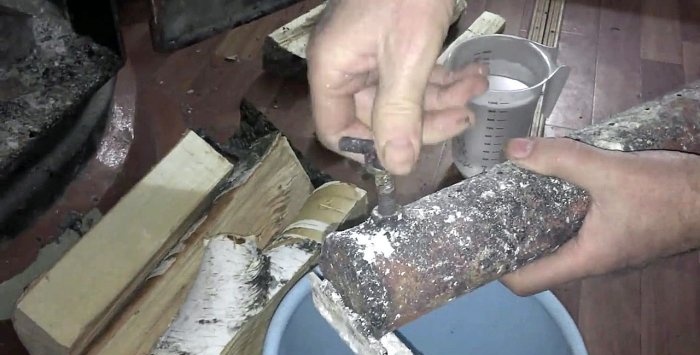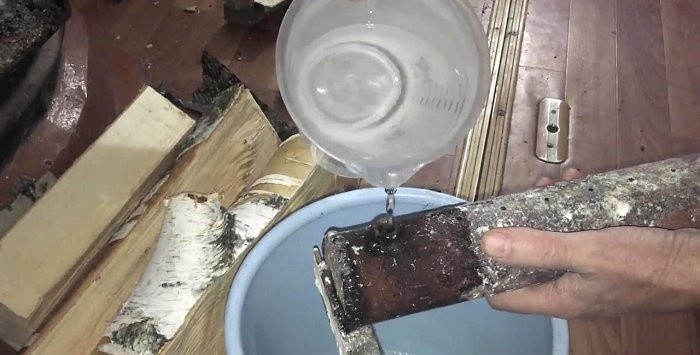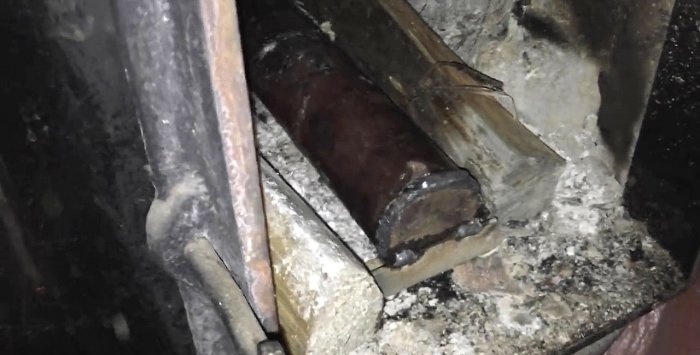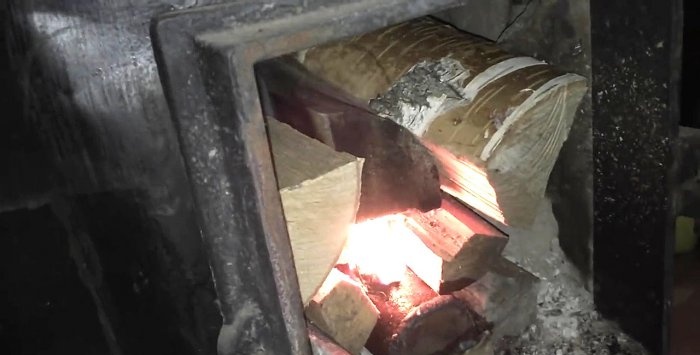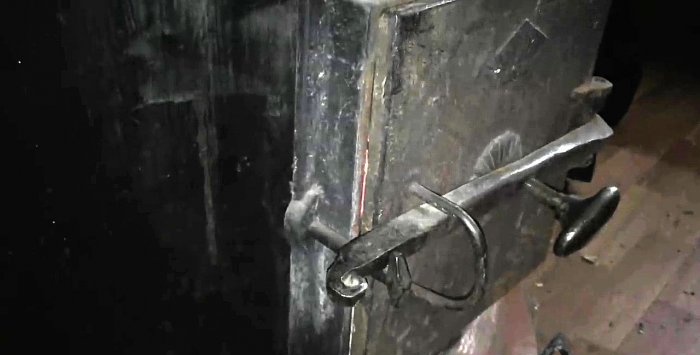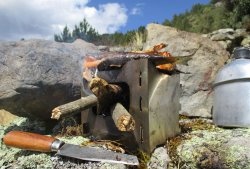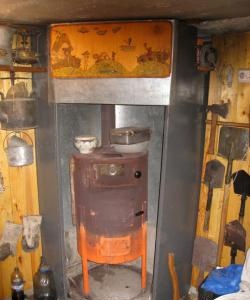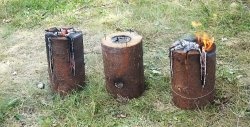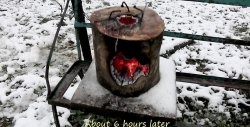For heating, I use an ordinary stove, the wood in which burns out very quickly, so when intense heat is generated, a significant part of it goes into the chimney. As a result, to maintain a normal temperature level, fuel must be loaded constantly. To solve this problem, I started using “eternal logs”, which helps save 30-50 percent of firewood. Without it, one load of the firebox burns out in 1 hour 10 minutes, and with it it takes 30 minutes longer.
Materials for manufacturing
To make an eternal log you will need:
- thick-walled metal pipe d76 mm, the length of a regular log for a stove;
- sheet of metal for welding the ends of the pipe;
- nut M12;
- bolt M12;
- steel corner 10x10 mm – 20 cm.
The process of making eternal logs to save money
I used a pipe with a diameter of 76 mm. I cut it to length to fit a standard log, which I put in the stove. The diameter used affects the filling capacity. If the combustion chamber of the stove is high, and a lot of firewood can be loaded into it, then a thicker pipe must be used.
There is nothing difficult to make.It is necessary to cut two circles from sheet metal along the diameter of the pipe and hermetically weld its ends. After this, I cut the steel angle, getting 2 pieces of 10 cm each. I weld them crosswise to the pipe along its edges, getting stable legs. Next, I simply drilled a 12 mm hole on top of the tube with a drill. I attached a nut to it and welded it, getting a filler neck. After this, you can screw a bolt into it, which acts as a cover. A small twig was welded to its head so that it could be unscrewed without a key. I made a series of holes along the entire perimeter at intervals of 4 cm with a 3 mm drill.
There are no strict criteria for the dimensions of the pipe used, since everything depends on the parameters of the stove, or rather the amount of firewood that can be loaded into it. I would like to draw your attention to the fact that you need to use thick metal so that it does not burn through. Also, you cannot make few holes, much less use thin drills of 1 or 2 mm, since steam under pressure is no joke. If, during testing, the log makes a whistle from strong pressure as steam escapes, then there are few holes, so it needs to be removed urgently. After this, you will have to drill the holes to a larger diameter. But there is no need to make them too large, since ash will get inside, and it is inconvenient to wash the welded pipe. It's better to have more small holes than a few large ones.
How to use
To use the eternal log, you need to unscrew the lid and pour water inside the pipe, filling it completely. I try to use almost boiling water so that the process starts right away.
After refueling, I close the filler neck with a bolt.
I put an eternal log on the bottom of the stove and lay it on the sides and on top with firewood.
After that, I light the fire and close the stove tightly.
Why does it work
Using an everlasting log increases the duration and quality of combustion of one load of firewood. Fire and heat can last up to 50 percent longer, depending on the design of the stove. Personally, for me, combustion is extended by up to 30 percent. My friends with other stove parameters have seen savings of 15 percent or more, which is explained by the inappropriate parameters of the dimensions of the log itself for their firebox.
This result is achieved due to the fact that the specific heat capacity of water vapor is higher than that of air. This is a physical fact that has long been proven. For air this indicator is 1 (kJ/(kg K), and for steam it reaches 2 (kJ/(kg K).
I would also like to note that eternal logs are not suitable for all types of wood stoves. It is ideally compatible with ordinary potbelly stoves with a direct chimney. If a brick stove has a duct chimney in the wall, then in certain cases there is a possibility of condensation of unburnt steam. If you want to use eternal logs with this stove design, I advise you to inspect the inspection hatches of the chimney for the appearance of sticky soot. If it is not there, then the log is suitable and you can safely use it.
